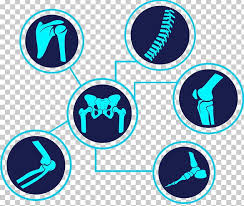+918048051936

This is your website preview.
Currently it only shows your basic business info. Start adding relevant business details such as description, images and products or services to gain your customers attention by using Boost 360 android app / iOS App / web portal.
Hip Replacement Surgeries are the biggest conducte...

Hip Replacement Surgeries are the biggest conducted operations for Indians in any year. The cause of such high numbers is not the matter of this article here, but to inform you of the choices and the internals of a process called hip resurfacing. Now, combined under hip replacement surgeries, this is a similar technique that tends to remove and replace the damaged cartilages around the joint of the hip bone and the pelvic socket. When the cartilages wear away the spacing between the femur bone (hip bone) head and the pelvic socket gets narrower. The cartilage tissues are smooth tissues that lubricate the movement in the ball and socket fashion, but its absence results in chronic unbearable pain during movement activities. There are different medical conditions like arthritis, childhood arthritis and so on that can develop into a loss of the cartilages. Although, medications are available to reduce this loss, but after a certain extent only surgery is the last resort since there is still no way known to grow back these damaged cartilages back there in the joints. There are three main regions that need replacement during such critical conditions. First, is the femur bone head since it wears away due to bone-to-bone friction. Second, the acetabulum or the socket that forms the part of the pelvic bone that rests the femur head or the ball. This ball moves in the socket during movement activities. The last one is the femoral neck. In a healthy person the ball and socket are separated with a nice gap made of cartilages with additional ligaments that support the bone during the movement. In traditional total hip replacement surgery, the femoral head is removed with the socket of the acetabulum as well. The hip resurfacing is a process in which the femoral head is not removed entirely, but trimmed and smoothed and finally covered with a smooth metal covering. Of course, the damaged bone and cartilage within the socket is removed and replaced with metal or ceramic ones. There are some benefits to hip resurfacing like revising them in a period of 10 to 20 years because the mechanical parts might wear away slowly as well, relatively easily than in total hip replacement. There are also lesser chances of dislocation since the size of the ball is fairly close to the natural size of the femoral head. This is in contrast to the traditional hip replacement method described just earlier. However, hip resurfacing is also a difficult procedure compared to the traditional one and it might also be a cause of femoral fracture if the bone doesn’t stand the time. Here the femoral head isn’t removed and replaced with a stem, which otherwise would have added extra strength and support to the body. In this case, the hip resurfacing has to replace with a traditional one, as the only option. The surgery might be recommended only if the condition is a more advanced one beyond non-surgical treatments. Osteoarthritis is a terrible problem, but sometimes the impact is not that critical. Thus, you must not opt for a surgery, but take a decision only if it affects your quality of life significantly. A lot of times, the hip can remain stiff, but only hinder during bending or climbing, and people would choose to reduce such activities than opting for a surgery.

